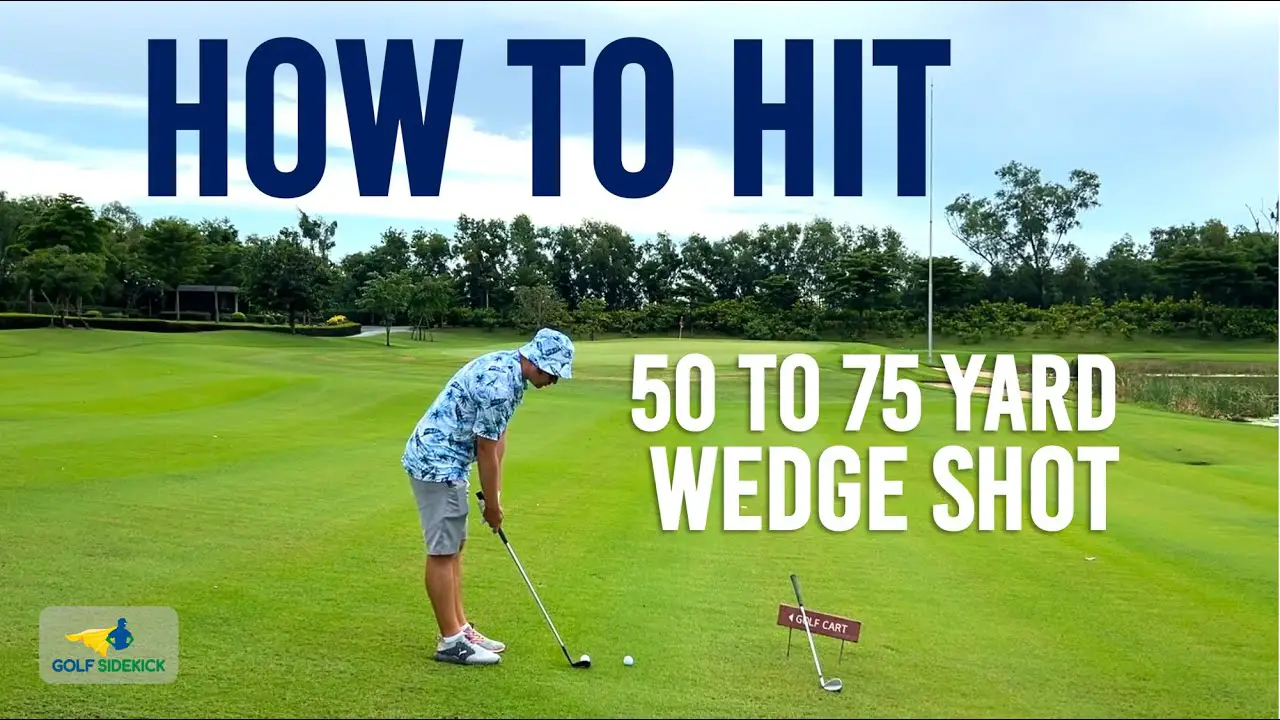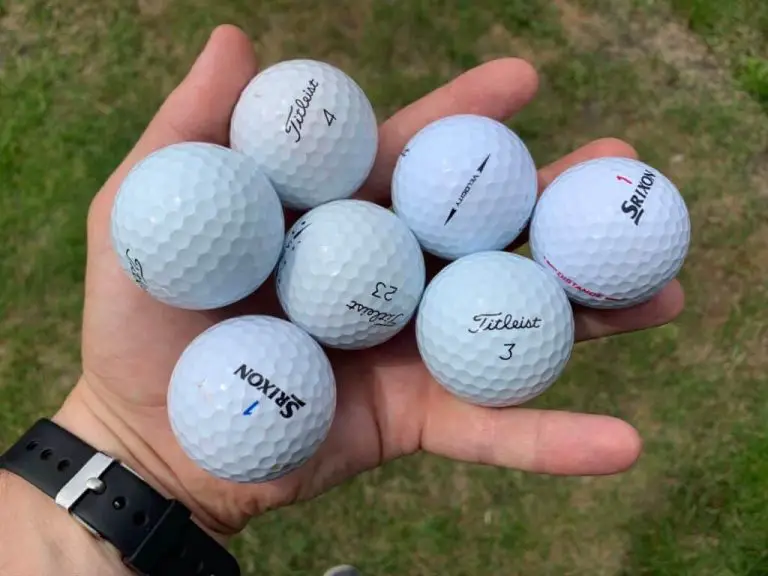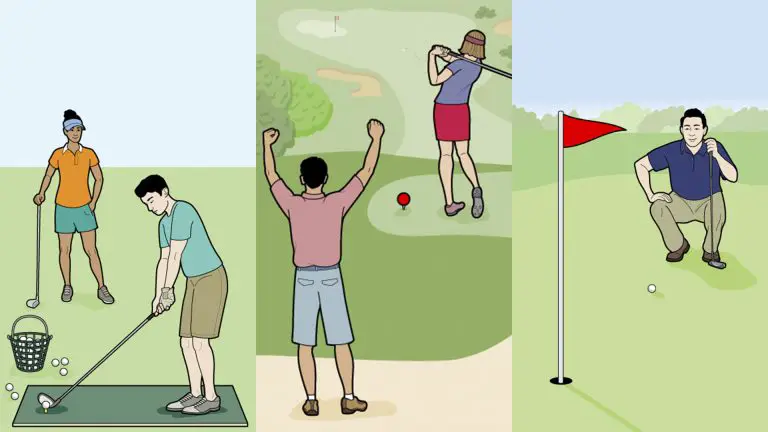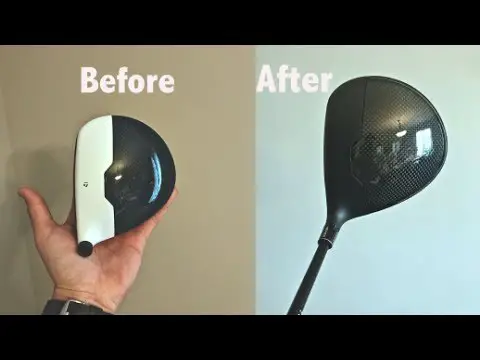How To Hit A Wedge Shot 50 To 75 Yards

Do you often find yourself faced with wedge shots ranging from 50 to 75 yards? These delicate shots require finesse, precision, and the ability to control both distance and trajectory. Whether you’re a beginner golfer looking to improve your short game or an experienced player aiming to fine-tune your wedge shots, mastering the art of hitting a wedge shot from 50 to 75 yards can significantly elevate your performance on the course.
In this comprehensive guide, we will take you through the essential techniques, strategies, and tips that will enable you to hit precise and accurate wedge shots within this yardage range. We will explore various aspects, starting with the selection of the appropriate wedge and loft options, understanding the importance of a proper setup and address position, and developing the right swing technique to maximize distance control.
Additionally, we will delve into how to control both distance and trajectory, fine-tune accuracy and spin control, adapt to different course conditions, and troubleshoot common challenges that golfers face when hitting wedge shots from 50 to 75 yards.
So, whether you’re aiming to stick the ball close to the pin or escape from tricky situations with finesse, this guide will provide you with the knowledge and tools you need to hit wedge shots with confidence, precision, and consistency. Let’s dive in and take your wedge game to new heights!

Understanding Wedge Selection and Loft Options
To effectively hit wedge shots from 50 to 75 yards, it’s important to understand the role of wedge selection and loft options. Let’s explore how these factors can influence your shot distance control.
How does wedge selection affect shot distance control?
Wedges come in various types, including the pitching wedge, gap wedge, sand wedge, and lob wedge. Each wedge offers different loft angles and characteristics that influence shot trajectory and distance. Let’s take a closer look at the main types of wedges and their attributes:
- Pitching Wedge: The pitching wedge typically has the lowest loft among wedges, ranging from 44 to 48 degrees. It is primarily used for longer approach shots but can also be effective for shots from the 50 to 75-yard range.
- Gap Wedge: The gap wedge, also known as the approach wedge, fills the gap between the pitching wedge and sand wedge. It typically has a loft ranging from 50 to 54 degrees, making it suitable for approach shots from varying distances, including the 50 to 75-yard range.
- Sand Wedge: The sand wedge is specifically designed to help players escape greenside bunkers and handle shots from soft sand or deep rough. It has a loft ranging from 54 to 58 degrees. While it may not be the ideal choice for shots in the 50 to 75-yard range, it can still be effective depending on the circumstances.
- Lob Wedge: The lob wedge has the highest loft angle, typically ranging from 58 to 64 degrees. It excels in shots that require a high trajectory and steep descent, such as hitting over obstacles or landing the ball softly on the green. While not commonly used for the 50 to 75-yard range, it can be valuable in certain situations.
When selecting a wedge for shots from 50 to 75 yards, it’s essential to consider the loft that will provide you with the desired shot trajectory and distance. Experiment with different wedges to find the one that allows you to hit the ball consistently within this yardage range.
Mastering Proper Setup and Address Position
A solid setup and address position are crucial for executing successful wedge shots. Let’s explore the key elements of a proper setup for shots from 50 to 75 yards.
How does proper setup contribute to successful wedge shots?
The way you set up and address the ball can significantly impact the outcome of your wedge shots. Pay attention to the following aspects to optimize your setup:
Grip considerations and hand positioning
Begin by ensuring a proper grip on the club. Place your left hand (for right-handed golfers) on the club, positioning it so that the handle runs diagonally across the base of your fingers. Place your right hand below the left hand, interlocking or overlapping the fingers. This grip allows for control and stability throughout the swing.
In terms of hand positioning, it’s essential to maintain a neutral position with your hands slightly ahead of the clubhead. This forward press helps ensure a descending strike and clean contact with the ball.
Stance width and ball position for optimal contact
Next, focus on your stance width and ball position. For shots from 50 to 75 yards, adopt a slightly narrower stance compared to a full swing. Position your feet shoulder-width apart to provide a stable base for the shot.
When it comes to ball position, place the ball slightly back in your stance, towards the center or just ahead of the center of your stance. This position encourages a crisp ball-first contact and helps promote a downward strike on the ball.
Posture and body alignment for consistent and accurate strikes
Maintaining proper posture and body alignment is crucial for consistent wedge shots. Here’s what you should keep in mind:
Start by standing tall with a straight spine and relaxed shoulders. Bend forward from the hips, allowing your arms to hang naturally. This posture creates a balanced and athletic position that facilitates a fluid swing.
As for body alignment, aim to align your feet, hips, and shoulders parallel to the target line. This alignment promotes a square clubface and encourages an accurate swing path towards the target. Take a moment to check your alignment before every shot to ensure you’re set up correctly.
By mastering the proper setup and address position, you establish a solid foundation for consistent and accurate wedge shots from 50 to 75 yards. Now, let’s move on to developing the right swing technique to execute these shots effectively.
Developing the Right Swing Technique
To hit precise wedge shots from 50 to 75 yards, it’s important to develop a proper swing technique. Let’s explore the key elements that contribute to an effective swing.
What are the key elements of a wedge swing?
Backswing length and rhythm for controlled power
In the backswing, focus on maintaining a smooth and controlled motion. The length of the backswing should be shorter compared to a full swing, reflecting the shorter distance you’re targeting. Allow your arms and wrists to hinge naturally while maintaining a connected and compact swing.
Maintaining a consistent rhythm throughout the swing is also essential. Avoid rushing the backswing or jerky movements, as they can lead to inconsistent ball contact. Find a rhythm that feels comfortable and allows for a controlled transition into the downswing.
Gradual transition and downswing: Generating power while maintaining control
As you transition from the backswing to the downswing, strive for a gradual and seamless shift of energy. Initiate the downswing with a slight weight shift towards the target, accompanied by a subtle rotation of the hips and a gradual uncoiling of the upper body.
Remember, the key is to generate power while maintaining control. Avoid excessive force or an overly aggressive swing that can compromise accuracy. Focus on maintaining a smooth and fluid motion throughout the downswing.
Impact and follow-through: Clubface control and generating spin
At impact, ensure that the clubface strikes the ball with a square face. The clubface should remain stable through impact, with your hands slightly ahead of the clubhead. This position promotes a downward strike and generates the desired spin on the ball.
Following the impact, allow your body to rotate naturally, extending your arms and wrists towards the target. A balanced and controlled follow-through helps maintain control and stability throughout the shot.
By incorporating these key elements into your wedge swing technique, you can achieve greater consistency and accuracy in your shots from 50 to 75 yards. Next, let’s explore how you can control the distance and trajectory of your wedge shots within this yardage range.
Controlling Distance and Trajectory
The ability to control the distance and trajectory of your wedge shots is crucial for precision and scoring. Let’s delve into some techniques that will help you achieve this control in the 50 to 75-yard range.
How can you control distance and trajectory for wedge shots?
Swing length and tempo adjustments for varying distances
To control the distance of your wedge shots from 50 to 75 yards, one effective technique is to make swing length and tempo adjustments. Here’s how you can do it:
- Swing Length: The length of your backswing plays a significant role in controlling shot distance. For shorter shots, aim for a shorter backswing, reducing the overall swing arc. This allows for a more controlled and precise strike on the ball. Experiment with different backswing lengths to find the one that consistently produces the desired distance.
- Tempo: Another important aspect of distance control is your swing tempo. A smoother and more controlled tempo can help generate consistent yardages on your wedge shots. Avoid rushing or forcing the swing, as it can lead to inconsistent results. Develop a tempo that feels comfortable and allows for a balanced and controlled strike.
By adjusting your swing length and tempo, you can fine-tune your wedge shots to hit specific distances within the 50 to 75-yard range. Remember to practice these adjustments on the driving range to develop a feel for the desired yardages.
Utilizing clubface control and loft manipulation
Clubface control and loft manipulation are essential techniques for controlling both distance and trajectory. Here’s how you can utilize them:
- Clubface Control: The angle of the clubface at impact has a significant impact on the shot’s trajectory. A square clubface will produce a more straightforward, lower trajectory, while opening or closing the clubface can influence the shot’s height and curvature. Experiment with clubface positions to achieve the desired trajectory for your wedge shots.
- Loft Manipulation: Each wedge has a specific loft angle, and you can utilize it to control both distance and trajectory. Increasing the loft on the club will generally result in a higher shot with more spin, while decreasing the loft will produce a lower trajectory. Understand the loft characteristics of your wedges and practice adjusting your shot trajectory by varying the loft angles.
By mastering clubface control and loft manipulation, you gain the ability to shape your wedge shots and hit specific distances and trajectories within the 50 to 75-yard range.
Incorporating shot-shaping techniques for specific shot requirements
Shot shaping refers to intentionally curving the ball in a particular direction to navigate obstacles or achieve specific landing spots. While it may not be a primary focus for wedge shots from 50 to 75 yards, understanding shot-shaping techniques can provide valuable tools for certain situations. Here are a couple of techniques to consider:
- Fade: A fade is a controlled shot that curves slightly from left to right for right-handed golfers (right to left for left-handed golfers). To execute a fade, aim to slightly open the clubface at address and swing along a slightly-out-to-in swing path. This shot shape can be useful for avoiding obstacles on the course or setting up better angles for approach shots.
- Draw: A draw is a controlled shot that curves slightly from right to left for right-handed golfers (left to right for left-handed golfers). To execute a draw, slightly close the clubface at address and swing along a slightly-in-to-out swing path. The draw shot can provide extra distance and help navigate dogleg holes or positions the ball closer to targets.
By understanding shot-shaping techniques, you can adapt your wedge shots to different course scenarios and enhance your shot-making abilities.
As you continue to refine your distance and trajectory control, it’s important to also focus on accuracy and spin control. In the next section, we’ll discuss techniques and strategies to improve your accuracy and generate optimal spin on your wedge shots.
Fine-tuning Accuracy and Spin Control
Hitting accurate wedge shots with the right amount of spin can make a significant difference in your ability to score well. Let’s explore some techniques and strategies to improve your accuracy and generate optimal spin on your wedge shots from 50 to 75 yards.
Establishing a consistent pre-shot routine
A pre-shot routine is essential for creating consistency and focus before each wedge shot. Develop a routine that works for you, incorporating the following elements:
- Visualization: Take a moment to visualize the shot you want to execute. Picture the trajectory, landing spot, and how the ball will react on the green.
- Clubface Alignment: Align the clubface to your target, ensuring it is square and aimed precisely where you want the ball to go.
- Body Alignment: Align your body parallel to the target line, including your feet, hips, and shoulders. This alignment helps set up the correct swing path and promotes accuracy.
By establishing a consistent pre-shot routine, you create a foundation of confidence and focus for each wedge shot.
Visualizing the target and committing to the shot
Visualization is a powerful mental tool that can enhance your accuracy. Before stepping up to the ball, visualize the target and the desired shot trajectory. Picture the ball flying towards the target and landing precisely where you want it to.
Once you have visualized the shot, commit to it fully. Trust your abilities and trust the process you have practiced. Clear any doubts from your mind and focus on executing the shot with confidence.
Overcoming anxiety and pressure on the course
Wedge shots from 50 to 75 yards often come with their fair share of pressure, especially when playing in competitive situations. It’s crucial to develop techniques to manage anxiety and perform under pressure. Here are a few strategies to consider:
- Deep Breathing: Take deep breaths to calm your nerves and relax your body. Deep breathing can help reduce anxiety and increase focus.
- Positive Self-Talk: Use positive self-talk to boost your confidence and maintain a positive mindset. Remind yourself of your capabilities and previous successful shots.
- Visualization of Success: Visualize successful shots and positive outcomes. Imagine yourself executing the shot with precision and seeing the ball land near the target.
By incorporating these mental strategies, you can improve your ability to stay calm and focused during wedge shots, leading to increased accuracy.
Generating optimal spin for better control
Spin control is crucial for stopping the ball on the green and gaining better control over your wedge shots. Here are some tips to help you generate optimal spin:
- Clean Contact: Achieving clean contact with the ball is crucial for generating spin. Ensure a downward strike, with the clubface striking the ball first, followed by the turf.
- Ball Compression: Compressing the ball helps create more friction and spin. To compress the ball, focus on hitting down on it with a slightly steeper angle of attack.
- Grip Pressure: A proper grip with moderate grip pressure allows for greater control over the clubface, promoting better spin. Avoid gripping the club too tightly, as it can restrict your ability to release the clubhead properly.
- Ball Choice: Choosing a ball with a urethane cover can enhance spin control. These balls are designed to provide more greenside control and increased spin on approach shots.
By implementing these techniques and strategies, you can improve your accuracy and spin control on wedge shots from 50 to 75 yards. Practice them during your training sessions and gradually incorporate them into your on-course play.
Now that we’ve covered techniques to improve accuracy and spin control, let’s explore some course management strategies that can further enhance your wedge game.
Course Management Strategies for Wedge Shots
Strategic course management is vital for optimizing your wedge shots from 50 to 75 yards. By making informed decisions and considering the course conditions, you can maximize your chances of success. Let’s delve into some key strategies to incorporate into your course management approach:
Assessing pin position and green conditions
Before hitting your wedge shot, take a moment to assess the pin position and the conditions of the green. Consider the location of the pin in relation to potential hazards or slopes on the green. This information will help you determine the best approach and landing area for your shot.
If the pin is positioned near the front or back of the green, you may need to adjust your shot distance to ensure the ball lands in the desired area. Take into account any slopes or undulations on the green that may affect the ball’s roll after landing.
Recognizing potential hazards and adjusting shot selection
Course management also involves identifying potential hazards and making smart shot selections to minimize risk. Evaluate the layout of the hole and determine any hazards such as bunkers, water hazards, or out-of-bounds areas that may come into play on your wedge shot.
Based on the location of hazards and your skill level, choose a shot that allows you to navigate around or over them. Sometimes, a conservative approach may be the best choice to ensure you avoid trouble and give yourself a straightforward next shot.
Strategic decision-making for optimal results
Strategic decision-making is essential for maximizing your scoring opportunities. Consider the overall layout of the hole, your strengths as a player, and the specific circumstances of the shot to make informed decisions.
For example, if you’re confident in your ability to control distance and spin, you might aim to land the ball closer to the pin, even if it means taking on a riskier shot. On the other hand, if you’re unsure about the shot or the conditions are challenging, it may be wiser to aim for a larger target area on the green and prioritize accuracy.
By incorporating effective course management strategies into your wedge shots, you can optimize your approach and increase the chances of hitting accurate shots from 50 to 75 yards.
Practice Drills and Training Aids
To further enhance your proficiency in hitting wedge shots from 50 to 75 yards, incorporating practice drills and utilizing training aids can be highly beneficial. Here are some drills and aids to consider:
Distance Control Drills: Targeting specific yardages
- Target Circles: Set up targets at various distances within the 50 to 75-yard range. Practice hitting shots that land within these targets, gradually narrowing down the target size as your accuracy improves.
- Ladder Drill: Place markers at 50, 60, 70, and 75 yards. Hit shots to each target, focusing on consistent distance control. Challenge yourself to land the ball within a specific range on each attempt.
Accuracy Drills: Hitting precise targets
- Bucket Challenge: Place buckets or smaller targets at specific distances within the 50 to 75-yard range. Aim to hit shots that land inside the buckets or as close to the targets as possible. This drill helps improve both distance control and accuracy.
- Around the Clock: Set up targets around the green, representing different clock positions (e.g., 12 o’clock, 3 o’clock, 6 o’clock). Hit shots from the 50 to 75-yard range, aiming to land the ball close to each target. This drill enhances accuracy and helps simulate real on-course situations.
Training Aids: Enhancing swing mechanics and consistency
- Alignment Stick: Place an alignment stick or club on the ground to ensure proper alignment during your setup. This aid helps reinforce correct body alignment and promotes consistent swings.
- Impact Bag: The impact bag is a training aid that helps improve the feel and timing of your impact position. Practice hitting wedge shots into the impact bag, focusing on maintaining a square clubface and a descending strike. Incorporating these practice drills and training
aids into your training routine will help you refine your technique, develop consistency, and improve your performance on wedge shots from 50 to 75 yards. Regular practice and deliberate focus on these drills will enhance your ability to hit accurate and controlled shots within this yardage range.
Adapting to Different Course Conditions
Adapting to different course conditions is an essential skill for successful wedge shots from 50 to 75 yards. Variables such as wind, slope, turf conditions, and different lies can significantly impact your shot. Let’s explore how you can adjust your wedge shots accordingly:
Considering wind and slope factors in shot planning
When facing windy conditions, it’s crucial to adjust your shot to account for the wind’s direction and strength. Here are some tips:
- Wind direction: Understand how the wind is blowing and its impact on the ball’s flight. Aim to play with the wind or against it by adjusting your club selection and shot trajectory.
- Club selection: In a headwind, select a slightly stronger club to compensate for the wind’s resistance. In a tailwind, choose a slightly weaker club to prevent the ball from flying too far.
- Shot trajectory: Lower ball flights are generally more stable in windy conditions. Adjust your shot trajectory by keeping the ball lower, reducing the wind’s impact on the ball’s flight.
Similarly, when dealing with sloping terrain, it’s essential to analyze the slope’s direction and degree. Adjust your aim and club selection accordingly to account for the slope’s influence on the ball’s path and distance.
Adapting technique and shot selection for firm or soft turf
The firmness or softness of the turf can affect the way the ball reacts after landing. Consider these adjustments:
- Firm turf: On firm turf, the ball is likely to release more after landing. Adjust your shot selection by aiming to land the ball slightly shorter than the target and allowing it to roll closer.
- Soft turf: In soft conditions, the ball is likely to dig into the ground upon landing, reducing the amount of roll. Aim to carry the ball closer to the target and anticipate minimal rollout.
Adjusting for different lies and rough conditions
Different lies and rough conditions require adjustments in your technique and shot selection. Here are some considerations:
- Tight lie: When the ball is sitting on a tight lie, ensure a clean contact by striking the ball first and avoiding excessive interaction with the turf. Use a more descending blow to avoid thin shots.
- Bare lie or fluffy rough: In these conditions, the ball may sit down or be partially buried. Adjust your shot by opening the clubface slightly to prevent the club from digging into the ground. Aim to make solid contact with the back of the ball.
- Wet or thick rough: Wet or thick rough can impede the clubhead’s speed and make it challenging to achieve distance. Consider using a more lofted club and making a steeper swing to get the ball out of the rough and onto the green.
By adapting your technique and shot selection to different course conditions, you’ll be better equipped to handle varying situations and improve your success rate on wedge shots from 50 to 75 yards.
Troubleshooting Common Challenges
Despite your best efforts, you may encounter common challenges when hitting wedge shots from 50 to 75 yards. Let’s address some of these challenges and offer tips for overcoming them:
Dealing with awkward distances within the 50 to 75-yard range
Awkward distances within the 50 to 75-yard range can pose challenges, as they may not fit perfectly into your full or partial swing distances. Here are some strategies to overcome this challenge:
- Club selection: Experiment with different clubs to find the one that allows you to comfortably hit the desired distance. For example, you may find that a three-quarter swing with your pitching wedge achieves the desired yardage.
- Swing tempo and rhythm: Adjust your swing tempo and rhythm to accommodate the awkward distance. Experiment with different swing lengths and tempos to find the right combination that generates consistent results.
- Practice and familiarity: Spend time on the practice range specifically working on shots from these awkward distances. By developing a feel for these yardages, you’ll gain confidence and improve your ability to execute them on the course.
- Addressing inconsistency in distance control
- Inconsistency in distance control can be frustrating and lead to unpredictable results. Here’s how to address this challenge:
- Focus on tempo and rhythm: Maintain a consistent and smooth swing tempo to ensure consistent ball contact and distance control. Avoid rushing or decelerating through impact.
- Develop a reference system: Create a reference system that helps you gauge different swing lengths and the corresponding distances they produce. This can be based on feel, visualization, or specific swing cues.
- Practice with specific targets: Set up targets of varying distances within the 50 to 75-yard range and focus on hitting shots that consistently land within those targets. This targeted practice will help you develop a better sense of distance control.
- Managing challenging lies and uneven lies
- Challenging lies, such as uphill or downhill lies, can affect your wedge shots. Here’s how to manage them effectively:
- Uphill lies: When faced with an uphill lie, adjust your setup by aligning your body with the slope. This adjustment will help you strike the ball cleanly and prevent it from launching too high. You may need to take an extra club to account for the added distance due to the slope.
- Downhill lies: On a downhill lie, adjust your stance by flexing your knees more to maintain balance. Position the ball slightly back in your stance and keep your weight favoring your front foot. This adjustment will help you strike the ball cleanly and prevent it from launching too low.
- Uneven lies: When dealing with uneven lies, focus on maintaining stability and balance throughout your swing. Make the necessary adjustments in your setup and club selection to account for the lie’s slope and avoid mis-hits.
- By understanding how to navigate challenging lies and implementing the appropriate adjustments, you’ll be better equipped to handle these situations and improve your performance on wedge shots.
Conclusion
Mastering wedge shots from 50 to 75 yards requires a combination of technique, practice, and course management. By understanding wedge selection, developing a proper setup, refining your swing technique, and controlling distance and trajectory, you can hit accurate and controlled shots within this yardage range.
Additionally, incorporating practice drills, training aids, and implementing effective course management strategies will further enhance your wedge game. Remember to adapt to different course conditions, troubleshoot common challenges, and continue refining your skills through regular practice.
So, head to the driving range and practice area, implement the techniques and strategies discussed in this guide, and take your wedge game to the next level. With dedication, practice, and a solid understanding of these concepts, you’ll gain confidence and proficiency in hitting wedge shots from 50 to 75 yards. Happy golfing!






